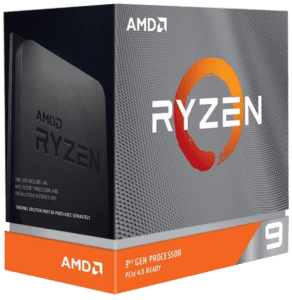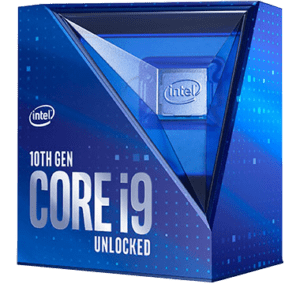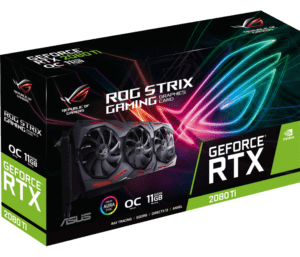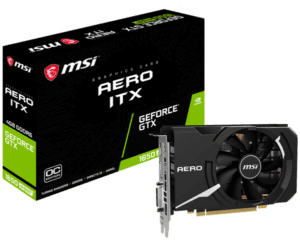A blender is a versatile tool for 3D creation. Blender has an entire pipeline of 3D graphics and visual effects creation. A blender is a robust software for modeling, sculpting, shading, compositing, and animation. Astonishingly, you can get it without spending a single buck. Being open-source, it allows the developers to create add-ins and plugins which helps the hobbyists and professional users in creating 3D graphics. 3D visual effects and modeling have become significantly important in both high and low budget productions.Blender is incredible software if you have the right workstation. Blender viewport is not demanding but when it comes to rendering things get a little different. This article will cover the ins and out to develop a workstation for Blender.
Before building the workstation for Blender it is important to look that how the Blender uses the hardware.
Blender is capable of doing many things, It has dedicated tabs or modes for modeling, sculpting, animation, and shading, etc. The versatility of the software makes it quite complex to pick some specific items to build a workstation for Blender.
3D modeling is the most expensively used mode of Blender software. Blender divides the 3D modeling workload between CPU and GPU. For modifiers, shapes, and Python modules Blender usually uses CPUs, while for visual effects, geometry, and viewport rendering Blender tries to use GPU. This approach makes Blender quite flexible software, if you like low-poly 3D modeling then this configuration is perfectly fine, but for high-poly, Opensubdevision, and parametric 3D graphics you need a powerful workstation.
Sculpting mode in Blender is another hardware intensive mode. Sculpting needs a lot of RAM. Because complex sculpting requires millions of faces to process and needs a lot of memory. If you are a sculpting enthusiast then an ordinary workstation would be of little use.
There are two rendering engines in Blender.
- Cycles
- Eevee
Cycles are a raytracing rendering engine and take a ridiculous amount of hardware power to render. If your workstation is not robust enough then it may take hours to render a simple scene. This rendering engine is demanding, but produce amazing results. If you need realistic output from Cycles rendering engine then a powerful workstation is needed. Cycles rendering engine is flexible and has the capability to run on CPU, GPU, and hybrid configuration (CPU+GPU).
Because of its realistic, high-quality results, cycles rendering engine is used in high budget productions like “Man in the castle” and “Next Gen”. If you have a powerful GPU then Cycles will render faster compared to CPU.
Eevee is a lightweight rendering engine introduced in Blender version 2.8. First of all, Eevee cannot be compared to Cycles, because this engine cannot achieve the fidelity of Cycles. It is a GPU based renderer and uses the PBR technique (Technique used in video game rendering).
In simple words, the Eevee is a high-quality viewport renderer and much faster compared to Cycles. If you are working in Eevee then it will work fine with mid-range GPUs.
We have seen the general features which require most of the hardware power, now we will take a look at specific items that need to build a robust workstation for Blender. The most important hardware items are CPUs and GPUs.
CPU
Why are we concentrating on CPUs when GPUs give faster performance? CPUs are important because:
- It can handle complex tasks, GPUs are designed to focus on one operation and large data associated with it. But on the other hand, CPUs are quite good at processing complex operations.
- CPUs can manage large memories from 8GBs to 64GBs, which means you will never run short of memory while rendering, which is a common cause of software crashing. The GPUs come with limited memory, most of the GPUs available today have 12GB-24GB memory. Even in multiple GPU configurations, these memories do not combine.
CPUs are little complicated things to buy. You can choose to buy the most powerful CPU available in the market but ultimately your budget affects the final selection. What are the best CPUs available in the market? Let’s find out
AMD Ryzen 9 3950X

Ryzen 9 can be considered as the best CPU available in the market. It is available in 16 cores with an operating frequency of 3.7 GHz Frequency. Ryzen 9 comes with 32 threads and Blender’s Cycle renderer is good at utilizing threads.
Pros
- Cost-effective
- Power Efficient
- Modest TDP
Cons
- Single-core performance is unsatisfactory
Buy Now: Amazon
Intel Core i9 10900K

The second best processor for Blender is Intel’s Core i9 10900K. The total number of core in i9 is 10 which are a lot less the AMD’s Ryzen 9. The number of threads is 20. The operating frequency is 3.7 GHz can reach up to a maximum 5.7GHz.
Pro
- Faster single-core performance
- It can be overclocked
- Great for gaming
Cons
- Needs a new motherboard
- Consumes more power
Buy Now: Amazon
AMD Ryzen 9 3900XT

3900XT is another CPU from AMD with an operating frequency of 3.8GHz. It has 12 core and 24 threads. If you like gaming then this GPU is not the best choice.
Pros
- Great single-core performance
- Compatible with 3000 series motherboards
Cons
- Does not come with a cooling fan
- Not good for gaming
Buy Now: Amazon
Let’s have a look at some other choices as well
| CPU | Specs | Pros and Cons | Cost |
| AMD Ryzen 9 3950X | Max-Min Frequency: 3.7–4.7GHz
L3 Cache: 64MB Cores: 16 Threads:32 TDP: 105W |
Good TDP and Power efficient but does not come with the cooler | $709.99 |
| Intel Core i9 10900K | Max-Min Frequency: 3.7–5.3GHz
L3 Cache: 20MB Cores: 10 Threads:20 TDP: 125W |
It can be overclocked and best for gaming, but not power-efficient | $598.88 |
| AMD Ryzen 9 3900XT | Max-Min Frequency: 3.7–4.8GHz
L3 Cache: 64MB Cores: 12 Threads:24 TDP: 105W |
Better single-core performance, not a good selection of you are a gamer | $454.99 |
| AMD Ryzen 7, 3800X | Max-Min Frequency: 3.9–4.5GHz
L3 Cache: 32MB Cores: 8 Threads:16 TDP: 105W |
Decent multithreaded performance, no other significant improvement from its predecessor | $339 |
| Intel Core i7, 10700 | Max-Min Frequency: 2.9–4.8GHz
L3 Cache: 16MB Cores: 8 Threads:16 TDP: 65W |
Excellent for gaming, power-efficient but low operating frequency | $379.88 |
| AMD Ryzen 5, 3600X | Max-Min Frequency: 3.8–4.4GHz
L3 Cache : 32MB Cores : 6 Threads :12 TDP: 95W |
Budget-friendly comes with a cooler but does not support the latest motherboards | $199 |
CPUs have their own importance and advantages but when it comes to speed CPUs cannot beat GPUs. Why we need GPUs for Blenders? Let’s find out
Faster
GPUs are a lot faster than CPUs when rendering, GPUs have more processing cores than CPUs. A GPU with decent memory can help a lot in Blender rendering, if you want to save time then having a good GPU will work for you.
GPUs are great for high-poly models. If your project contains a lot of complex geometry then GPU can help to speed up the rendering.
Nvidia GeForce RTX 2080 Ti

This GPU is best for blender and should be the top priority before making a workstation for Blender.
It has 4325 CUDA cores, with a 1350 MHz clock. It is an 11GB GPU.
Pros
- Ray Tracing
- 4K gaming
Cons
- Expensive
Buy Now: Amazon
Nvidia GeForce RTX 2070 Super

This GPU has 2560 CUDA cores with 8GB of memory. This is the most compelling option if you don’t have a budget for RTX 2080 and 2080 Ti.
Pros
- More Cores
- Ray Tracing
Cons
- A bit heavier
Buy Now: Amazon
Nvidia GeForce GTX 1650 Super

If you are tight on budget then GTX 1650 is for you. It has 896 cores with a 1485Mhz clock. Memory of 4GB
Pros
- Affordable
- Power-efficient
Cons
- No big improvement in performance compared to predecessors
Buy Now: Amazon
There are some AMD graphical processing units also available. The issue with AMDs GPUs is that most of them do not support ray tracing. If you genuinely making a workstation for Blender then always go for Nvidia GeForce GPUs.
| GPU | Specs | Pros and cons | Cost |
| Nvidia GeForce RTX 2080 Ti | Cores : 4325
Clock : 1545Mhz Memory: 11GB |
It has ray tracing and can be played games in 4k, but still very expensive | $1899 |
| Nvidia GeForce RTX 2070 Super | Cores : 2560
Clock : 1770 Memory: 8GB |
It also comes with ray tracing with a decent number of cores | $587 |
| Nvidia GeForce GTX 1650 Super | Cores : 896
Clock : 1485 Memory: 4GB |
It is affordable and very power efficient, but compared to predecessors there is not a big improvement | $210 |
There is a range of CPUs and GPUs which can be selected to build a powerful workstation for Blender. But it all depends upon the budget. We discussed CPUs and GPUs of different ranges of prices. If you have a big budget then go for Ryzen 9 3900XT and Nvidia GeForce 2080Ti. But if there is a limit on a budget then go for an affordable CPU AMD Ryzen 5 3600X and Nvidia GeForce GTX 1650 Super GPU.
from Linux Hint https://ift.tt/2HTstHH




0 Comments